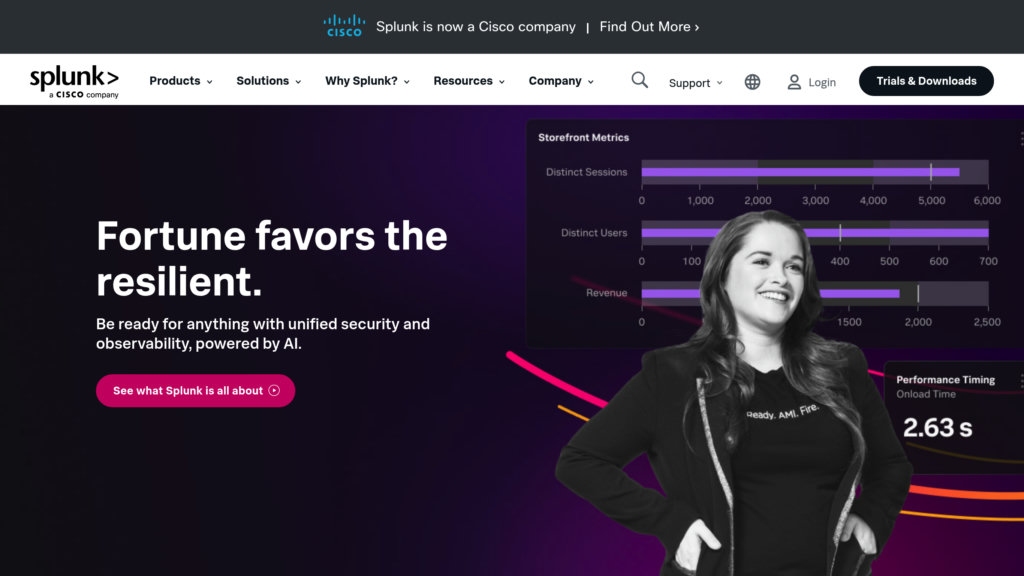Splunk
Real-time data platform for security, IT operations and business intelligence
Introduction
What is Splunk?
Splunk is a powerful software solution that collects, organizes, and interprets machine-generated data from various sources. It helps businesses uncover valuable insights through intuitive search functions, dynamic visualizations, and proactive alert systems. By offering a consolidated perspective on intricate data ecosystems, Splunk enhances security oversight, IT operational efficiency, regulatory compliance, and business intelligence, ultimately boosting decision speed and operational durability.
Key Features:
• Versatile Data Integration: Capable of absorbing information from logs, performance metrics, API feeds, and network streams, ensuring smooth connectivity between local infrastructure and cloud-based systems.
• Instant Query and Investigation: Features a sophisticated search query language (SPL) for real-time data exploration, immediate insight generation, and irregularity identification.
• Dynamic Reporting Interfaces: Generates tailored dashboards, analytical reports, and graphical representations to track system status, security risks, and performance indicators.
• Proactive Notification System: Allows configuration of custom thresholds and automated triggers for early warnings, facilitating preemptive issue resolution and response protocols.
• Cybersecurity and Risk Analysis: Incorporates Splunk Enterprise Security for security information and event management (SIEM), threat data correlation, and accelerated security incident analysis.
• Flexible Deployment Architecture: Enables clustering of indexers and search heads for reliable operation, efficient resource distribution, and expandable data handling capacity.
Use Cases:
• Cybersecurity Oversight: Identifies, examines, and addresses external cyberattacks, internal security risks, and policy non-compliance as they occur.
• IT Infrastructure Management: Delivers comprehensive monitoring of hardware status, software performance, and technical issue resolution processes.
• Business Intelligence Analysis: Evaluates user interaction patterns, operational efficiencies, and key performance indicators to guide corporate strategy.
• Regulatory Compliance: Assists in meeting legal obligations through comprehensive activity records, log retention, and compliance documentation.
• Application Performance Tracking: Monitors software application metrics and log data to maintain superior functionality and customer satisfaction.
